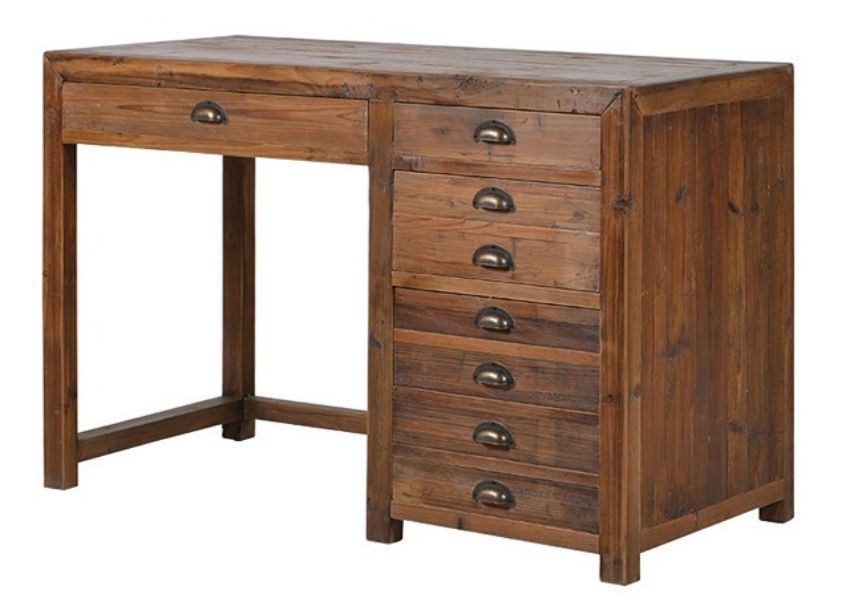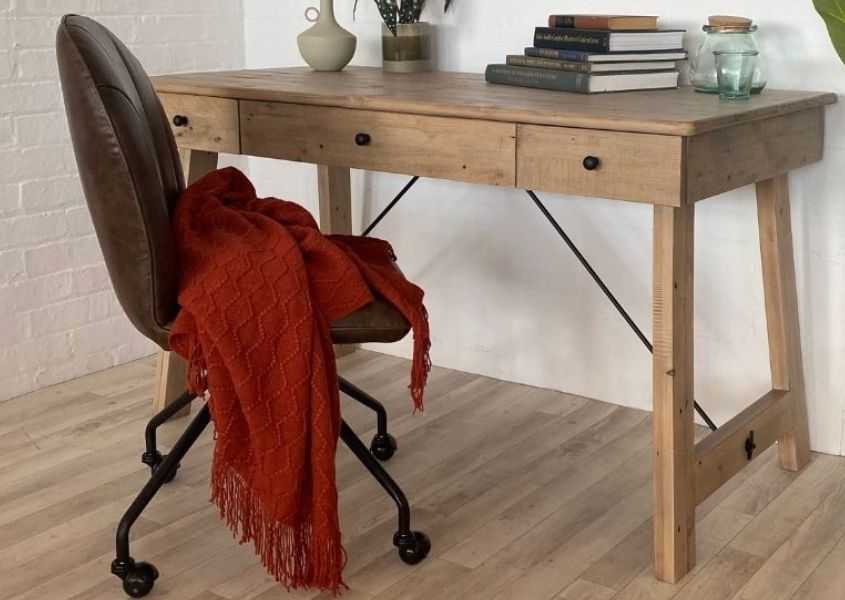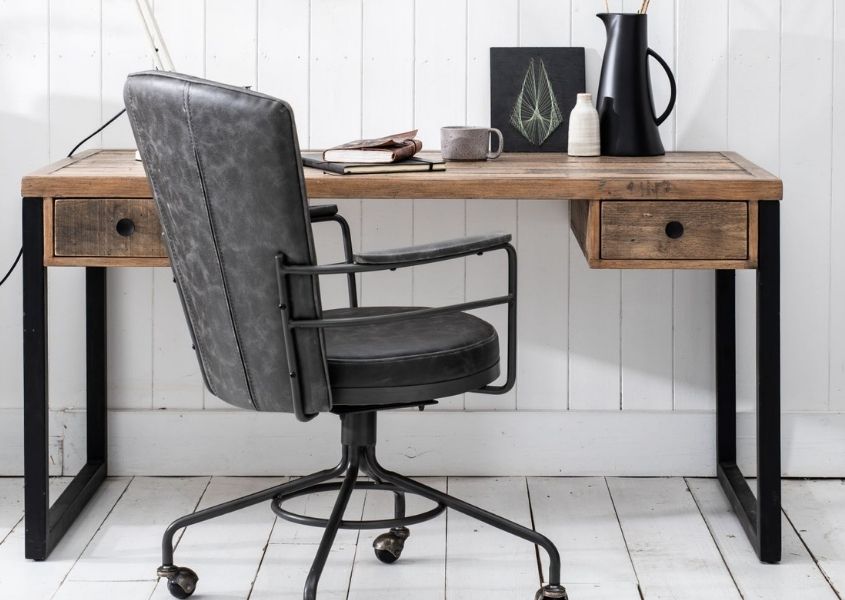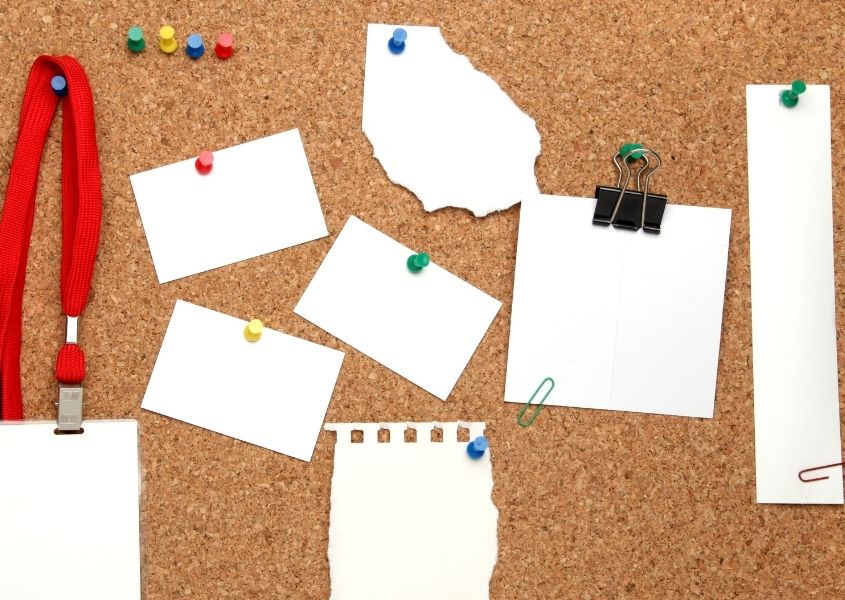
It’s back to school time of year and after a month or more off it’s important to get back into the swing of things. Homework is inevitable for older children and creating a perfect study place is a vital element of helping them finish it quickly and fuss-free! Help your child by creating a deskscape that will minimise distractions and help them concentrate to get their studying done….
1. The correct size desk
The desk should be big enough for text and writing books as well as a laptop, get a desk with drawers so you have plenty of room for stationery storage. The Arthur Reclaimed Wood Desk merges classic design with plenty of storage provided by its eight drawers.

If your child is a little older and planning to go on to university then get a large desk as they will most likely need more space than when they are at secondary school. A good quality reclaimed wood desk will be part of your home furniture for many years.
2. The right chair
Although your child will not be sitting at this desk all day long it’s still a good idea to get the best desk chair you can afford. Sitting with a bad posture can cause all sorts of health issues as well as affect concentration. Make sure the chair is height adjustable and that the backrest supplies good lumbar support as they are working. If your child can’t reach the floor then consider getting a footrest this will also help with their posture when studying.

3. Limit distractions on the desk
Keep the desktop as clear as possible – this will definitely limit distractions: have everything they need – pen pot, light, close and accessible but not too much to distract. An industrial style desk like the Standford, with its two drawers, is just the right size and would be a stylish addition to any teenager’s room. If you feel you need more storage space then a set of office drawers can easily be added below.

4. Cable tidy
Cables are unsightly – no one really wants to see them but they are an unavoidable part of an office desk. Keep them out of the way by using a cable tidy, especially if smaller children can access them to fiddle with them or if they are hanging loose around the sides of the desk.
5. A portable speaker
This is definitely optional – some children love a bit of background music but others will just find it to be too much of a distraction. So go with what your child wants, you can give this a try and move it to another part of their bedroom if you find they are listening to music that does not help them when studying.

6. Create a wall organiser
This is a great way to keep reminders easily visible and not get lost. They can write a study schedule for the week and tick off tasks as they are completed – it’s a great motivator – everyone likes to tick things off their to-do list. Add a few fun items as well, such as some funny pictures of them with their friends and family or inspirational quotes for when the going gets tough! A corkboard or a magnet board is perfect for this.